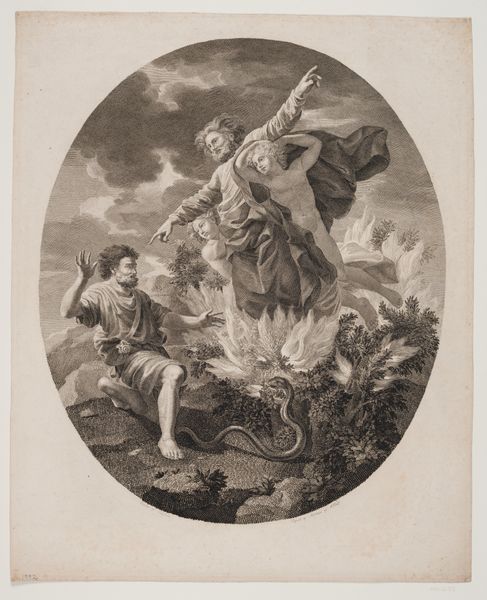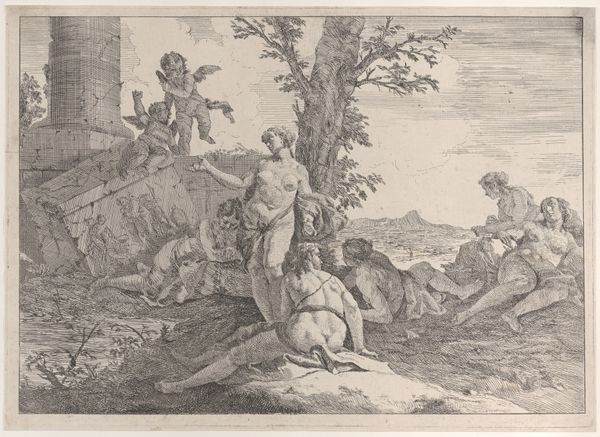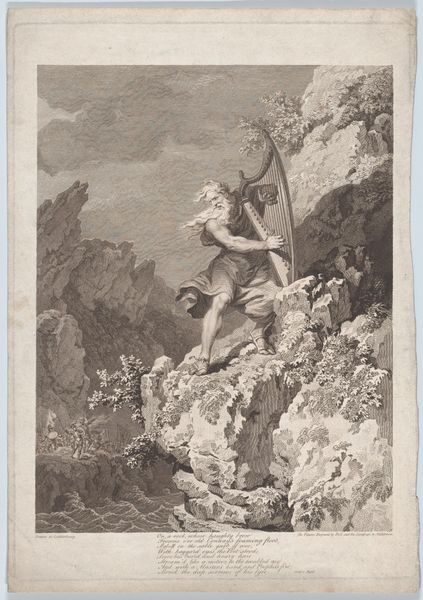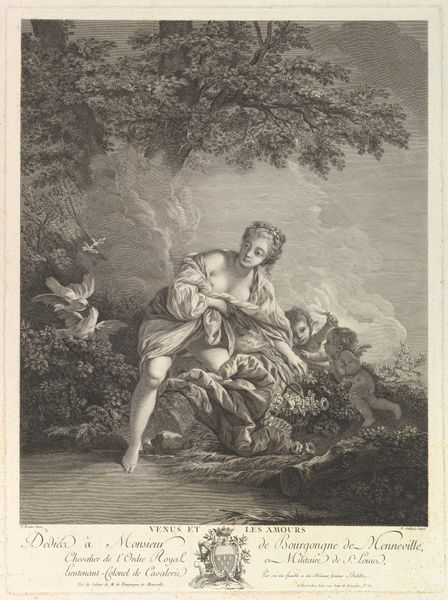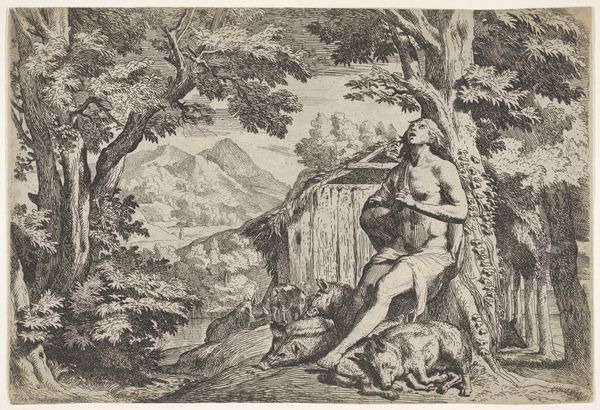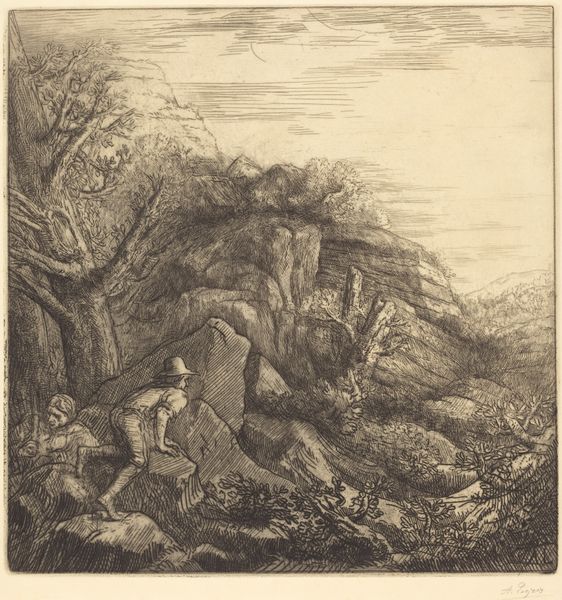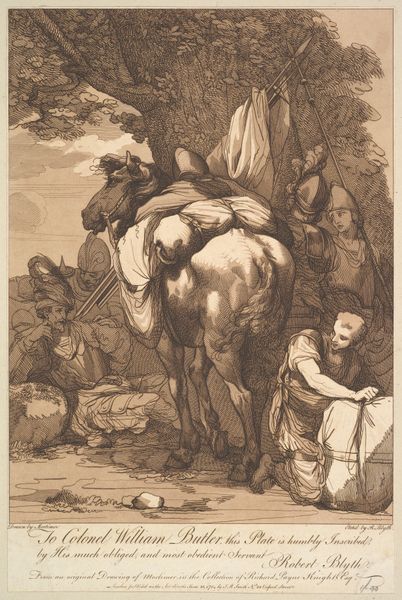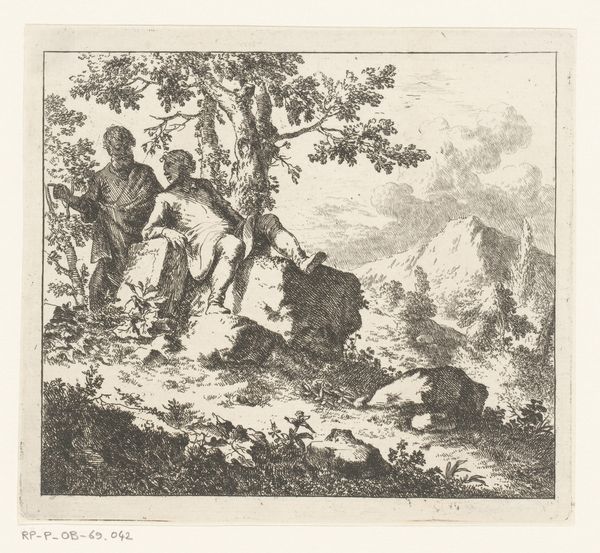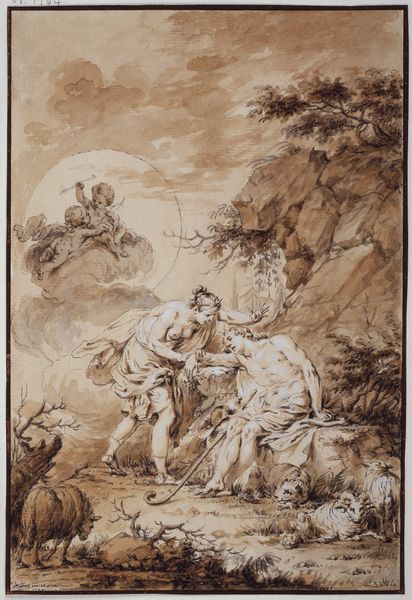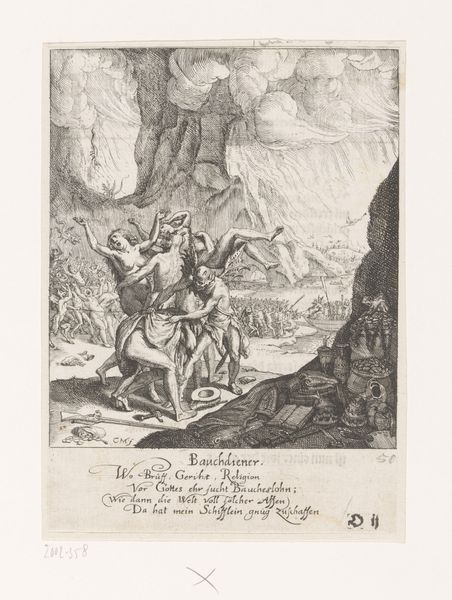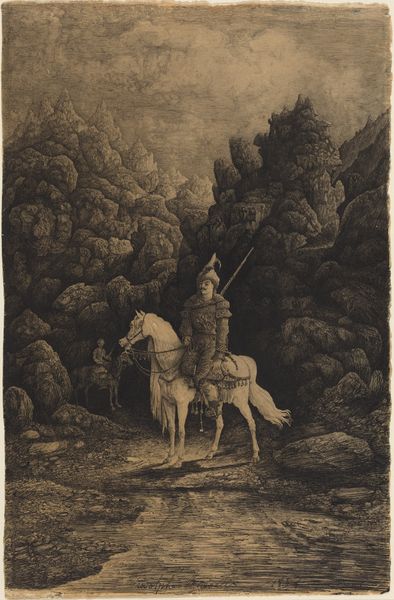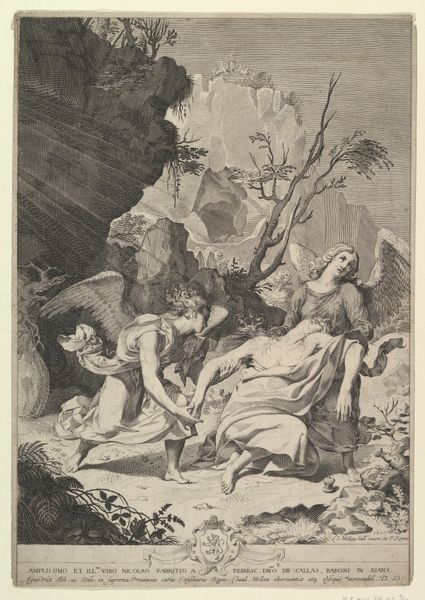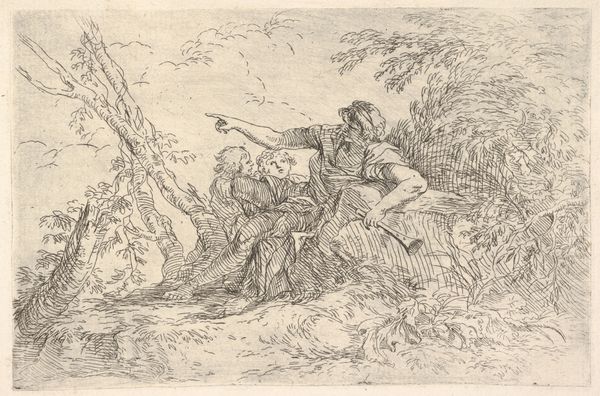
Dimensions: overall: 27.7 x 18.2 cm (10 7/8 x 7 3/16 in.)
Copyright: National Gallery of Art: CC0 1.0
Editor: Rodolphe Bresdin’s etching, “Oriental Horsewoman in a Desolate Mountain Landscape,” created in 1858… It's strikingly detailed and, well, quite strange. It evokes a sense of both grand adventure and utter isolation. What stands out to you in this piece? Curator: It’s fascinating how Bresdin, working within the Orientalist and Romantic movements, uses this scene to negotiate France's colonial gaze. Do you notice the meticulous detail? It’s not just aesthetic; it functions to authenticate the exotic "Orient" for a European audience hungry for the spectacle of the “other.” The horsewoman, elevated in the composition, literally towers over the anonymous crowd behind the mountains. What does that hierarchy communicate to you? Editor: That makes sense. She's definitely positioned as a figure of power and mystery. Almost as if the locals were merely a part of this landscape, whereas she is at the heart of it. I see her adornments as an emblem of a higher societal position and the white horse she is riding, as purity. Curator: Precisely! And that positioning reinforces a power dynamic, right? Bresdin wasn't necessarily traveling to these locales; instead, he's relying on, and reproducing, preconceived notions. Think about how artistic depictions can, in turn, shape public understanding and even policy towards other cultures. Is art innocent in this process? Editor: Definitely not innocent. Art always participates, intentionally or not, in those social dynamics. It makes me question the whole concept of "desolate"—desolate for whom? For Bresdin's European viewers, perhaps? Curator: Exactly! The "desolation" speaks to a Western perspective imposed on the East, not necessarily an inherent quality of the place itself. I've always admired how effectively artwork allows one to explore society's role in dictating such skewed historical narratives. Editor: This was great! It's shifted my understanding from just admiring the artwork to analyzing how socio-historical constructs may be affecting my perceptions and opinions. Curator: Agreed. It’s a constant dialogue, and this piece offers a great example to consider going forward.
Comments
No comments
Be the first to comment and join the conversation on the ultimate creative platform.
